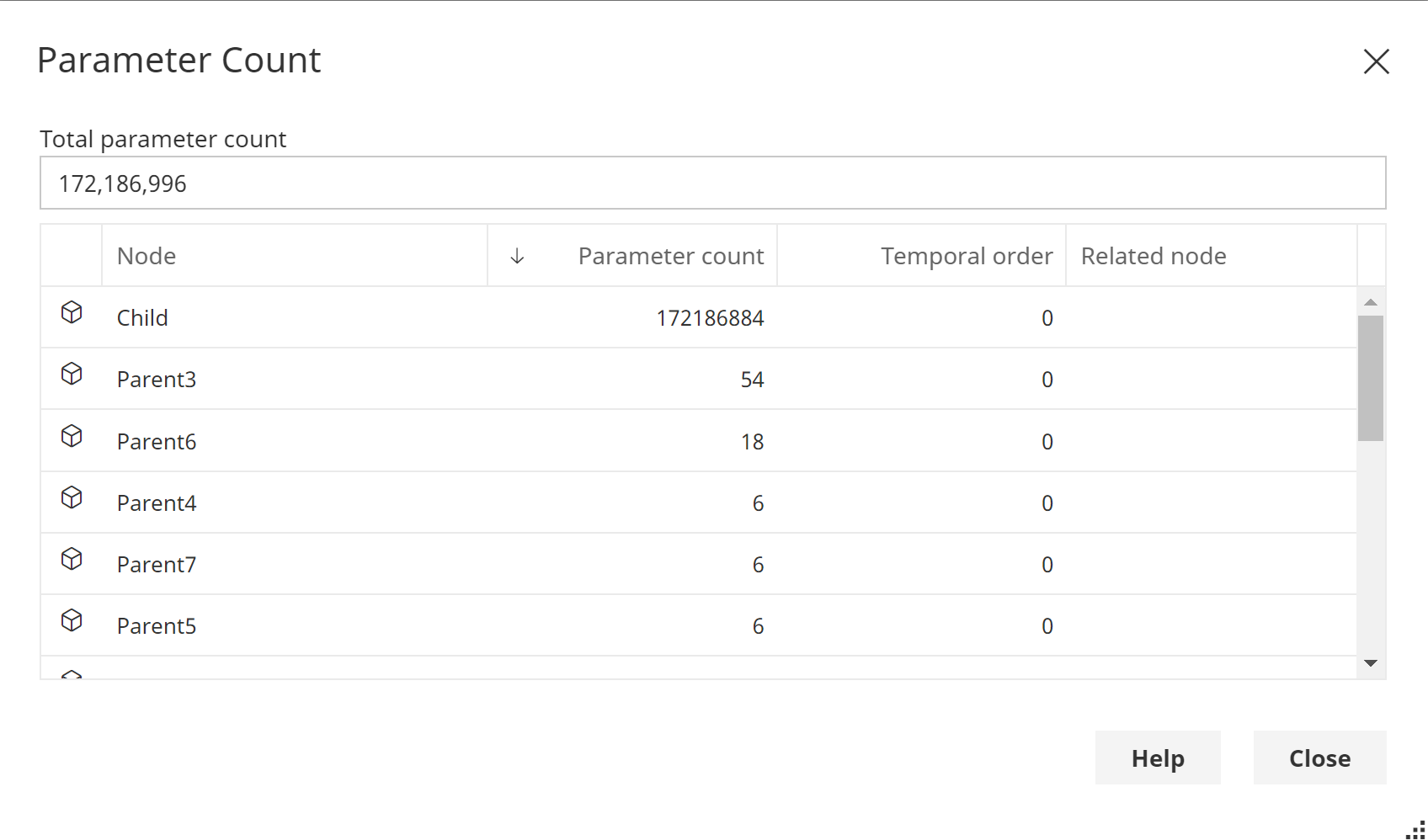Parameter Count
Introduction
Displays the total number of parameters in the network, as well as a breakdown by node.
This tool can be used to identify nodes which have a large number of parameters, which may be undesirable.
For a discrete distribution (Table), the number of parameters for each parent combination will be 1 less than the number of variable states (or product of variable state counts, when a node has multiple variables). This is because a discrete probability distribution sums to 1.0, so one parameter is redundant.
Columns
- Name - the name of the node
- Parameter count - the number of parameters in the node distribution
- Temporal order - identifies the temporal distribution (DBN nodes only)
- Related node - identifies the noisy node distribution (Noisy nodes only)
Many parameters
A large number of parameters can be a problem if:
- It causes performance problems during inference
- If manually eliciting parameters, there are too many to gather expert opinion for.
- A distribution is being learned from data, and a larger table means it is more likely that there is insufficient data to have confidence in some parameters.
Techniques like Divorcing, Noisy nodes, or Latent Variables can be used to reduce complexity.

Parameter Count can calculate the number of parameters required by a node's distribution(s) even if the distribution has not been created yet.
Memory and performance
During inference, distributions are created internally, in order to calculate the queries requested. These distributions may be larger than the original node distributions (unless the network is a tree). There are also other considerations during inference, such as which evidence is set, and which queries are requested.
See Tree Query for more information.